#otaniemi
Explore tagged Tumblr posts
Photo

Tuuli-Tytti, 31
“I'm wearing a ruffle headband and t-shirt from my own collection, thrifted jacket which I dyed pink, vintage y2K skirt thrifted from Paris, cotton stockings with lace figures and Vagabond boots. My style tips for cold weather: Definitely wearing colorful clothes and your favorite accessories.”
18 November 2023, Otaniemi
62 notes
·
View notes
Video
Eight Fifty-one by Pekka Nikrus Via Flickr: In album Window
#window#venetian blinds#light#through#STG#glass#rain#drops#blue#morning#aalto university#aalto-yliopisto#aalto-universitetet#espoo#esbo#otaniemi#otnäs#finland#suomi#pni#pekka nikrus#skrubu#flickr
6 notes
·
View notes
Text
The preliminary phase of the Vastaamo psychotherapy centre data breach trial commences on Thursday at the District Court of Western Uusimaa in Otaniemi, Espoo.
The data breaches are believed to have been committed in November 2018 and March 2019, affecting an estimated 30,000 victims.
Newspaper Ilkka-Pohjalainen carried an STT report that the main suspect in the case, 26-year-old Aleksanteri Kivimäki, faces charges of aggravated data breaches, nearly 9,600 charges of aggravated dissemination of sensitive information, over 21,300 counts of attempted aggravated extortion, and 20 counts of aggravated extortion.
The prosecution is calling on the court to hand Kivimäki a seven-year prison sentence.
Helsingin Sanomat (HS) also reported about the beginning of the trial, noting that Thursday's preliminary session will likely be concise and focus mainly on establishing guidelines as well as scheduling the forthcoming trial, which is set to commence on 13 November.
HS further notes that the defendant plans to participate in the preparatory meeting, despite not being legally obliged to do so until the main trial in November.
Kivimäki asserts his innocence and refutes any connection to the alleged offences, arguing that the case lacks compelling or concrete proof implicating him.
He contends that the true perpetrator is another individual within similar social circles, according to HS.
The National Bureau of Investigation (NBI) has previously stated that the evidence against Kivimäki is substantial. Authorities are expected to release extensive preliminary investigation material for the case on Thursday, comprising over 2,000 pages, STT reported.
Petrol prices take surprising plunge
Despite the prevailing global economic conditions and forecasts of gloomy times ahead, fuel prices in Finland have dropped, falling below the two-euro-per-litre mark in numerous locations, as reported by tabloid Iltalehti.
As of Wednesday evening, motorists in Kirkkonummi had the opportunity to fill their tanks with 95E10 gasoline for a mere 1.78 euros per litre.
Back in September, Iltalehti noted, the average cost for 95E10 petrol was 2.15 euros per litre. During the summer, some fuel stations even reached a peak price of 2.50 euros per litre.
In early October, price projections remained pessimistic, and the unstable situation in the Middle East was expected to lead to an upswing in fuel costs.
However, the expected price surge has yet to materialise. According to data collected on October 25th, the average cost of 95E10 gasoline currently stands at 1.94 euros per litre. For diesel consumers, the most budget-friendly refuelling option is available in Vantaa at 1.90 euros per litre, while for higher octane 98E5 gasoline, Kirkkonummi offers the lowest price at 1.88 euros per litre.
Iltalehti noted, however, that it may only be a matter of time before the recent political escalations in the Middle East affect oil supplies and consequently influence prices.
Another Finnish city cancels disgraced singer's gig
Tabloid Ilta-Sanomat reported that the city of Lappeenranta joined other Finnish cities in cancelling concerts featuring singer Jari Sillanpää.
The singer and former tango star was convicted of disseminating child pornography in 2020, although the fine he received was reduced on appeal.
Sillanpää was scheduled to perform at a Christmas concert in the South Karelian city on 3 December, but the city said it had to re-evaluate the hosting of the event citing child-friendly values.
"The former and now re-publicised criminal convictions of Jari Sillanpää are in conflict with the city's values and ethical guidelines and therefore the city does not see cooperation as viable," a press release by Lappeenranta city authorities reads.
Sillanpää's previous convictions have been brought to public attention once again following a documentary series by Finnish broadcaster MTV.
Lappeenranta is the second Finnish city to make such a decision regarding the Christmas concert tour in recent weeks, following a similar move by Turku, while authorities in Pori are also believed to be considering their options.
2 notes
·
View notes
Text

Viime lauantaina Ville meni kokkaamaan ja viettämään aikaa otaniemi-aikojen ystäviensä kanssa. Itse kutsuin omat otaniemi-ystäväni kylään. Teimme ruokaa, leivoimme, ja pelasimme tietovisapelejä. Mukana olivat Daniel ja Anni (molemmat ovat käyneet Kauhavalla), sekä Eero että Jeroen. Eero siirtyi Aallolta Suomen Ympäristökeskuksen töihin viime vuonna. Jeroen (hollannista) aloitti väitöskirjatyöntekijänä meillä nyt syksyllä.
Kodin siivoaminen on yllättävän tehokasta kun tietää, että on vieraita tulossa. Ehkä tällaisia kokoontumisia pitäisi järjestää useamminkin!

0 notes
Text



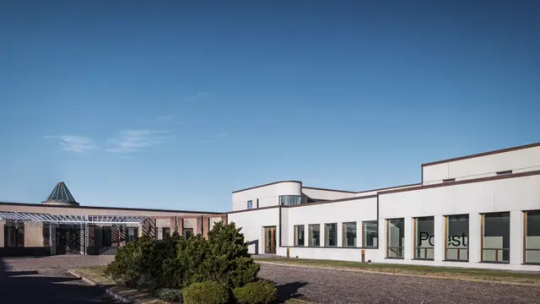
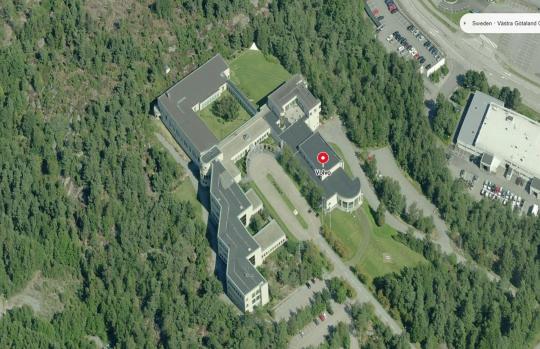



ALDO and ALVAR
Last week I posted about four world famous architects of the late 20th century whose careers show a way to build that respects the historical city as well as the natural landscape. Of the four, it was Aldo Giurgola, whose firm was originally founded in Philadelphia, who had the greatest sensitivity to the landscape. This he learned from the great Finnish architect of the earlier 20th century, Alvar Aalto. The ability to fragment a large plan to allow an interpenetration with nature, while maintaining an overall sense of order, is something they both shared.
Pictured: 1. Giurgola, the IBM Customer Executive Education Center in Palisades, NY, from the lake, 2. Giurgola, the IBM Customer Executive Education Center, entry, 3. Giurgola, the IBM Customer Executive Education Center, NY, aerial, 4. Giurgola, Volvo Headquarters, now the Polestar Design Studio, in Goteborg, Sweden, entry, 5. Giurgola, Polestar Design Studio, aerial, 6. Aalto, Paimio Sanitorium, Paimio, Finland, entry, 7. Aalto, Paimio Sanitorium in the winter, aerial, and 8. Aalto, now Alvar Aalto University, Otaniemi, Finland, aerial.
0 notes
Text


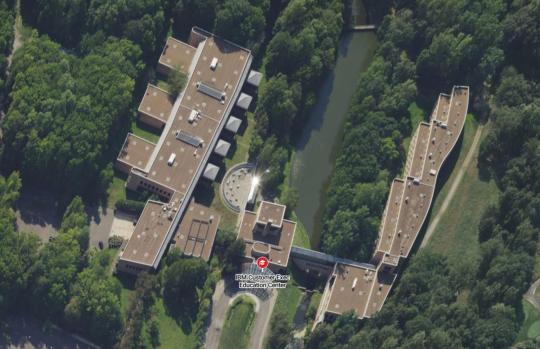
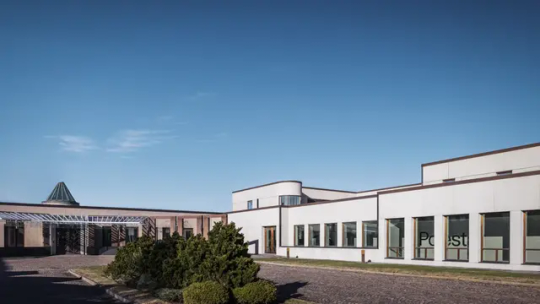



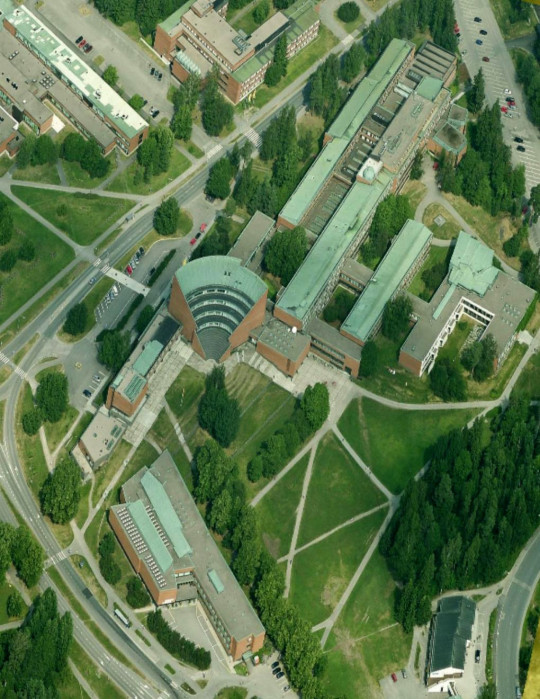
ALDO and ALVAR
Last week I posted about four world famous architects of the late 20th century whose careers show a way to build that respects the historical city as well as the natural landscape. Of the four, it was Aldo Giurgola, whose firm was originally founded in Philadelphia, who had the greatest sensitivity to the landscape. This he learned from the great Finnish architect of the earlier 20th century, Alvar Aalto. The ability to fragment a large plan to allow an interpenetration with nature, while maintaining an overall sense of order, is something they both shared.
Pictured: 1. Giurgola, the IBM Customer Executive Education Center in Palisades, NY, from the lake, 2. Giurgola, the IBM Customer Executive Education Center, entry, 3. Giurgola, the IBM Customer Executive Education Center, NY, aerial, 4. Giurgola, Volvo Headquarters, now the Polestar Design Studio, in Goteborg, Sweden, entry, 5. Giurgola, Polestar Design Studio, aerial, 6. Aalto, Paimio Sanitorium, Paimio, Finland, entry, 7. Aalto, Paimio Sanitorium in the winter, aerial, and 8. Aalto, now Alvar Aalto University, Otaniemi, Finland, aerial.
0 notes
Text
Bittium Supplied NATO’s DIANA Test Centres with World-Class Tactical Communications Technology
Bittium has supplied NATO’s DIANA (Defence Innovation Accelerator for the North Atlantic) test centres with software defined radio based Bittium Tactical Wireless IP Network™ (TAC WIN) system and Bittium Tough SDR™ soldier and vehicle radios. The new technology test centres will be established at VTT Technical Research Centre of Finland’s sites in Otaniemi, Espoo and University of Oulu. The state-of the-art products, which provide broadband tactical communications and are used for example by defense forces in different countries, will be part of the research infrastructure of the test centres. NATO’s DIANA test centres help companies of NATO countries to strengthen their technological expertise and competitiveness. The test centres offer tools for technology development, and the technology themes of the test centres are related to next-generation communication systems, 6G technology, cybersecurity, and quantum and space technologies.
Bittium has supplied NATO’s DIANA (Defence Innovation Accelerator for the North Atlantic) test centres with software defined radio based Bittium Tactical Wireless IP Network™ (TAC WIN) system and Bittium Tough SDR™ soldier and vehicle radios. The new technology test centres will be established at VTT Technical Research Centre of Finland’s sites in Otaniemi, Espoo and University of Oulu. The…

View On WordPress
0 notes
Text
Otaniemi Chapel
Heikki and Kaija Siren Otaniemi Chapelhttps://divisare.com/projects/329795-heikki-and-kaija-siren-federico-covre-otaniemi-chapel …http://www.andrejweingerl.com/aawk.html#tretji architecture #interior
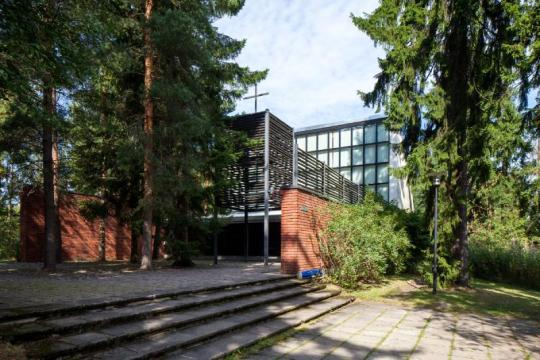
View On WordPress
0 notes
Text
Tervehdys Jussi
ja menestystä vaaleissa!
Toivottaa Jorma Aho-Mantila (yo IYK 1970, Otaniemi 1971-1976 sähköos.)
0 notes
Text
Invisible Powers Driving Cars and Cranes: What Goes On Behind the Scenes to Get These Machines Moving? - Technology Org
New Post has been published on https://thedigitalinsider.com/invisible-powers-driving-cars-and-cranes-what-goes-on-behind-the-scenes-to-get-these-machines-moving-technology-org/
Invisible Powers Driving Cars and Cranes: What Goes On Behind the Scenes to Get These Machines Moving? - Technology Org
Self-driving cars, also known as robot cars, have been on the horizon for years, but we don���t see them in traffic—yet. Robots have been used in industrial sites for decades, but bringing them into wider use has been challenging. How do these self-driving robots work, what gets them going—and what are the biggest obstacles?
[embedded content]
A!ex looks like a regular crossover vehicle, but under—and on top of—its shiny white exterior, you’ll find the latest technologies, from radar to artificial intelligence. A!ex is a self-driving robot car used for multidisciplinary research at Aalto University that’s also contributing to a revolution in traffic systems.
‘A!ex was a normal car that we equipped with high-quality sensors and localization, like cameras, LIDAR and a computer that runs our algorithms—and this is how it became a self-driving car,’ explains postdoctoral fellow Gökhan Alcan, one of the researchers from the School of Electrical Engineering who works on A!ex.
The self-driving A!ex was outfitted for research use with a special software package—through this transformation, the normal-looking Lexus RX became a robot car. ‘Robot car’ is even written on its rear window, so others on the road recognize that behind the tinted windows, invisible forces are at the wheel rather than a human driver.
A robot car. Image credit: Aalto University
Well, except for the fact that there is a person sitting in the driver’s seat.
Finnish legislation allows for remote operation of a vehicle – a rarity in Europe. To test the robot car on public roads, the researchers had to spend several months getting a permit. They received permission, but they also promised the Finnish Transport and Communications Agency Traficom that the self-driving car would always have a safety driver. And there’s even a bright red emergency stop button in the car, should the need arise.
Laboratory manager Jesse Pirhonen from the School of Engineering is responsible for the different gadgets and software in A!ex, as well as for making sure that researchers who do tests with the car don’t fiddle with its basic settings or the work of other groups.
But Pirhonen has also become quite familiar with sitting behind the wheel. He is one of three designated safety drivers who are allowed to cruise public roads with the self-driving A!ex—though only in a limited area.
‘We drive A!ex on public roads to test and develop our algorithms, but mostly only here in the Otaniemi campus area,’ Pirhonen explains.
Other roads aren’t off-limits to A!ex, but a separate plan and prior agreement has to be made with Traficom.
Self-driving is a result of combining LIDAR and AI
Inside an autonomous car. Image credit: Aalto University
Alongside algorithms, A!ex gets moving thanks to a combination of multidisciplinary research and other invisible powers.
The emergency stop button is located where a gear stick would normally be. The safety driver can still change gears on the automatic transmission with a gear switcher if necessary. The self-driving car is not missing its steering wheel, but most of the vehicle’s control comes from highly tuned and continuously developing tech.
The trunk of the robot car houses a computer that runs its algorithms, as well as a power distribution system that sends electricity to the computer, sensors and screens in the car. The various cameras and sensors on A!ex send information to the computer for steering decision-making, while the laser scanner or LIDAR on the roof senses the surroundings, such as oncoming cars and pedestrians, and localizes the self-driving car.
LIDAR scanner on top of a self-driving car. Image credit: Aalto University
The self-driving car’s controller then gets an algorithmic decision from the computer on how to proceed—maybe a surprising obstacle has appeared that requires stopping, for example.
Pirhonen and Alcan describe the two main research directions A!ex is used for. The first is to further develop the control of the vehicle; in other words, they’re looking for ways that A!ex could steer itself safely and completely independently. This requires improving the self-driving car’s decision-making capability: A!ex’s control algorithms are honed to make decisions with safety in mind.
And what about the other main research focus? Its goal seems nearly impossible: to get the robot car to see and sense well enough to make safe decisions in challenging weather conditions, like the Finnish winter.
Can the weather be cleared to make way for a robot car?
Gökhan Alcan and Jesse Pirhonen are demonstrating A!ex the robot car and the associated research on a June day in Otaniemi. In the hot sun, frozen country roads and snow flurries are the last thing on anyone’s mind. But those are one big reason why robot cars aren’t yet seen on the roads of Finland.
Winter conditions are tough for any driver, not the least for robots relying on machine vision. Postdoctoral researcher Risto Ojala is looking for solutions to A!ex’s sensing and navigation in difficult conditions. He demonstrated a tool developed at Aalto designed to reduce the effect of weather on the sensors of robot cars.
‘Snowfall is a central challenge for self-driving cars because it prevents sensors from seeing what’s around the car. LIDAR, for example, reflects “noise” from snowflakes and can’t sense the environment. Our group has developed an algorithm that allows us to mostly remove snowflakes from LIDAR data, so we can see the real environment instead of noise,’ Ojala explains.
Visualized LIDAR data. Image credit: Aalto University
Ojala strongly believes that self-driving cars will make it onto the roads in the future—even in Finland’s difficult winter conditions. But this is probably still far in the future, because first there has to be a technology breakthrough in easier, non-winter conditions. The obstacles or delays keeping robot cars back aren’t solely to do with technology, Ojala points out.
‘There are also legal questions related to autonomous driving. Even if self-driving cars were safer than cars driven by people, we find it hard to accept when a machine makes mistakes. People can’t accept that even one accident could happen because of an error by a self-driving car, even if the total proportion of accidents was smaller than with human-driven cars,’ says Ojala.
A smart crane isn’t bothered by the weather, and there’s more than just tech involved
Robots driven by unseen forces have been used in industry for decades, but they’re also under constant development to become smarter and more autonomous.
At the Aalto University Industrial Internet Campus (AIIC), the most visible sign of this R&D is Ilmatar, the smart crane that is the pillar of Aalto’s cooperation with Konecranes. A crane may sound like a dull thing to study, but for robotics and autonomy researchers, it is anything but.
‘It’s software, it’s smart devices, it’s everything you can expect from a modern autonomous machine and an intelligent system. When you think about it more closely, it’s a huge robot,’ says AIIC’s COO Jari Juhanko.
A smart crane. Image credit: Aalto University
True to its name, the Industrial Internet Campus is characterised by two traits, says Juhanko: industrial and internet. The ‘industrial’ refers to the research environment of the smart crane, where the focus is on the needs of, and close collaboration with, the manufacturing industry. ‘Internet’ has to do with all the invisible powers needed get a smart crane moving.
‘Internet means connectivity. In other words, these devices can communicate with others by exchanging information. A simple example would be to share their own location, and anything else having to do with monitoring the robot’s condition and safety,’ says Juhanko.
Beyond its technical features, research and operations around the smart crane are governed by invisible powers like different business models and regulations. The digitalisation of industry isn’t just about technology, says Juhanko, but also about getting all these factors to work together simultaneously.
A smart crane. Image credit: Aalto University
‘If one element is missing, we end up with a table with legs of different lengths: it wobbles and will fall over at some point. The balance comes from all of these factors syncing up,’ Juhanko says.
Fences and a red controller guarantee safety
Just like A!ex, Ilmatar comes with various safety regulations, and Juhanko says that a top priority is that robots cannot harm people in any situation. In line with current regulations, research on the smart crane is done in a fenced area in the industrial lab.
‘The safety features don’t classify it as a cobot, a collaborative robot that could function fully autonomously with a person in the same space,’ explains Juhanko.
Smart crane control system. Image credit: Aalto University
The smart crane is controlled through an open interface to the Konecranes system, which means it’s controlled by computer, but manual control is also possible using a radio controller – coloured red, just like the emergency stop button in A!ex. Ilmatar also has a camera so it can use machine vision to observe any obstacles in its environment, like a misplaced office chair—or a person.
If the connection to the robot is lost for some reason, the crane immediately stops, says Juhanko. If the crane is operated remotely, the connection must be constantly monitored. Everything must be followed closely so nothing dangerous happens, and this is where regulations governing industrial robots come into play.
‘More and more autonomy is needed, but how it is regulated is also changing. The kinds of safety factors that are required and accepted is a topic that’s under constant discussion,’ Juhanko says.
People can also delay and hinder the increase of autonomy in industrial settings, Juhanko points out.
‘People have to accept a changing world. There is so much discussion about how robotics and autonomous machines will destroy jobs. At the same time, it’s known that the jobs replaced by robots are usually dull, monotonous, and repetitive, and those are the easiest to automate. Then there’s talk of a shortage of industrial workers—this can be a solution for that,’ Juhanko says.
A smart crane hook. Image credit: Aalto University
Despite all its advanced tech and machine intelligence, Ilmatar the autonomous crane can’t function without some human intervention.
‘The only challenge is the traditional hook system. When something is hooked on and attached, you need human hands. Our plan, in collaboration with our partners, is to build a robot that could do this, too,’ says Juhanko.
In the future, Ilmatar might get loads to lift without the help of human muscle. And, as Risto Ojala hopefully predicted, some day—maybe quite far off still—the invisible challenges of self-driving cars will be solved, and they will become as commonplace as industrial robots. But for now, A!ex the robot car will travel the streets under the watchful eye of its small group of safety drivers.
Source: Aalto University
You can offer your link to a page which is relevant to the topic of this post.
#Aalto University#ai#algorithm#Algorithms#amp#artificial#Artificial Intelligence#autonomous driving#autonomous vehicles#Business#Cameras#Cars#challenge#Collaboration#collaborative#communications#computer#connectivity#data#Delay#development#devices#electricity#engineering#Environment#Europe#eye#Featured information processing#Features#Future
0 notes
Photo

Paloma, 5, Verso, 4
Paloma: “I like this outfit because it is soft.”Verso: “I like the pom poms and the color pink.”
30 May 2024, Otaniemi
756 notes
·
View notes
Video
Structures 77 by Pekka Nikrus Via Flickr: In album Structures Abstract
#monochrome#building#window#tree#multiexposure#multiple exposure#triple exposure#pni3xp#otaniemi#otnäs#espoo#esbo#finland#suomi#pni#pekka nikrus#skrubu#flickr
2 notes
·
View notes
Text
Keilaniemi, known for its corporate offices and the headquarters of large companies, is developing into a lively seaside residential and office area with hotels. At the same time,...
0 notes
Text

The Otaniemi district in Espoo, Finland is the home of the main campus of the Aalto University (formerly independent Helsinki University of Technology) as well as several student dormitories.
While niemi means just a cape (as in "landmass extending into a body water", in this case the Baltic Sea), scholars are less certain what ota means, as usual the story is a mess and includes hundreds if not thousands of years and several languages. However, in typical Finnish custom, today the area contains several roads, streets and other features named with the "ota"-prefix, like Otakaari, the looping main street of the district.
Some jokers call the district "Onaniemi", implying that the stereotypically male and geeky students of, say, computer science might have trouble finding sexual partners and would instead end up masturbating more than the general populace. An unsourced but plausible claim is that for decades, of all the small kiosks in the nation-wide R-Kioski chain, the one in Otaniemi was the top-seller of porn mags, but also the first place to suddenly lose those sales when the internet became fast enough to transfer photos and the campus network was expanded to the dorm rooms.
Like probably everywhere in the world, also in Finland the students of technology gravitated towards science fiction and fantasy, American shows like Star Trek and Babylon 5 of course being popular. However, around mid 90s, when the rest of us still relied on what our three-ish TV channels decided to air and what a couple of companies decided to publish (and what a handful of magazines decided to write about), they had the means and skills to learn about and acquire all kind of works of entertainment unknown to the internet-deprived masses. So, while everyone knew the 90s Moomin series, some had seen a couple of Miyazaki films on the TV and random kids were exposed to the mess that it is Ginga: Nagareboshi Gin, quite unsurprisingly the tech students were among the pioneers of the Finnish anime and manga scene as a separate hobby.
Which is probably why even on the Google Maps, it says basically (Here be) otakus over this seemingly innocent-lookíng small driveway.
96 notes
·
View notes
Photo

Alvar and Elisa Aalto - Otaniemi Undergraduate Centre - Otaniemi, Helsinki. Finland - 1965
#art#technique#Architecture#archdaily#archilovers#architectureporn#hiddenarchitecture#hiddengem#otaniemi#helsinki#university#aalto#alvaraalto#modernism#1960s
43 notes
·
View notes
Photo

#ヘルシンキ 郊外の #アアルト大学 キャンパス内にある #オタニエミ礼拝堂 は開口部の開け方が #アルヴァアアルト に似ているし、 #架構 が素晴らしい。 #カイヤサイレン #ヘイッキサイレン による設計。 #フィンランド #教会 #旅 #旅行 #finland #helsinki #aaltouniversity #otaniemi #otaniemichapel #architecture #chapel #trip #travel (Otaniemen kappeli - Otaniemi Chapel) https://www.instagram.com/p/B2IoyBhjb6e/?igshid=1m2a16ahlrvds
#ヘルシンキ#アアルト大学#オタニエミ礼拝堂#アルヴァアアルト#架構#カイヤサイレン#ヘイッキサイレン#フィンランド#教会#旅#旅行#finland#helsinki#aaltouniversity#otaniemi#otaniemichapel#architecture#chapel#trip#travel
5 notes
·
View notes

